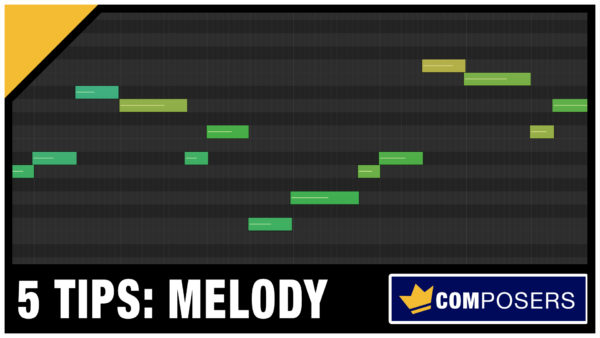Do you want to write a great melody for your music? Do you want to write music full of expression, emotion & movement? To tell your amazing story in sound. =)

You really need 2 main things to create a good melody. The first one is knowledge of various expression techniques in music.
The second one is the skills to execute those performance techniques. I will teach you the knowledge, but you will have to practice to get the skills, and invest in good instruments and controllers to add the expression and emotion to your performances.
How do you actually write a good melody?
Well, there are really no rules for writing melodies. In fact, there really are no hard rules in music at all. But there are guidelines and tips that can help you along the way.
The most important thing for great melodies comes down to one word: Expression. Expression is what gives a performance more emotion. It is what adds the human character, the life and soul to music.
But what is expression? Basically it’s all of the techniques and ways you can use to add variation and movement into a melody.
I have a golden rule for melodies, and basically everything within music:
“How you play the notes, is more important than which notes you play”.
Now I want to give you a list of examples, of performance and expression techniques you can use to enhance your melodies. Use all these aspects creatively and with variation when you write your melodies:
1. Note Attack and Sustain
From short staccato notes to long lush sustains. On guitar you can use various amount of palm muting, and on strings you can bounce on the strings. There are a great number of performance techniques you can use, so check which ones your software instrument supports, or record it with a real instrument if you can.
2. Vibrato Depth and Speed
For sustained notes, the vibrato is probably the most important expressive technique to add emotion. You can control how deep the vibrato goes, meaning the pitch range you vibrate between, as well as the speed, meaning how fast the vibration is.
3. Note Transitions
With a piano, you can only skip from a note to the next. There is no way to transition smoothly between them. But on many instruments, such as strings, guitar and brass…you can actually glide from a note to the next.
How fast you glide in between them is also a creative choice you have. A short, but smooth transition between notes is called a legato. Longer transitions with a more gliding feel between the notes are called portamento, or glissando.
4. Intensity and Dynamics
Dynamics, volume and intensity is a really important way of expression in music. A piano have a huge range of dynamics, from the softest of soft called ppp, to the loudest of loud, called fff. Which are musical terms for describing the dynamic loudness of the note. However, a piano can not change the dynamics in the sustain of the sound, which for example strings and brass can do very well.
In fact, gradually increasing or decreasing the dynamics when sustaining a note is a great way to add expression. It is called crescendo when you increase the strength, and diminuendo when you decrease it.
You should use both the dynamics for the attack of the notes, which is controlled by velocity values for MIDI instruments, as well as dynamics over time, often controlled by the modulation wheel on your MIDI keyboard, or a breath controller for air-based instruments like brass and woodwinds.
5. Special Performance Techniques
Many instruments have unique ways of adding character into the performance. Such as growling on brass, tremolo on strings, overblowing on woodwinds, and so on. Adding these special little performance techniques as fills in your performance can be a great way to add even more variation and character.
Because the most important thing in music regarding expression, is to add variation, motion and movement into the performance. Static means boring, while variation is like the very essence of life. This essential truth is that everything in life is in constant motion. And your mission as a music composer, is to add life and motion into your music.
Best Instruments for Melodies
What instruments are great for expressive melodies? If you can sing, you have a huge advantage. Because the most powerful instrument in the world for its huge range of expression, variation, tone, character and dynamics…is the human voice.
But…there are many instruments that have lots of expressive control: like string instruments, both picked like a guitar and bowed like in an orchestra. Brass instruments have great expression too.
I have found that the most expressive instruments have lots of ways to control the sustaining sound, as well as the transition between notes.
A piano, is a great dynamic instrument. It can play 88 keys from ppp to fff in dynamics. Meaning super soft, to super loud. But it can not transition between the notes like a violin or trombone for example.
That is why I personally like to use guitars, strings, brass and woodwinds for lead melodies. Because it gives you more expression in both the sustain of a note, and the transition to the next note.
Now Take Action
Go and practice right now! Create amazing melodies, using all these techniques for adding expression and variation. Make sure you make music like you tell a good story, with movement, variation, emotion and expression. Good luck, and have fun! =)
